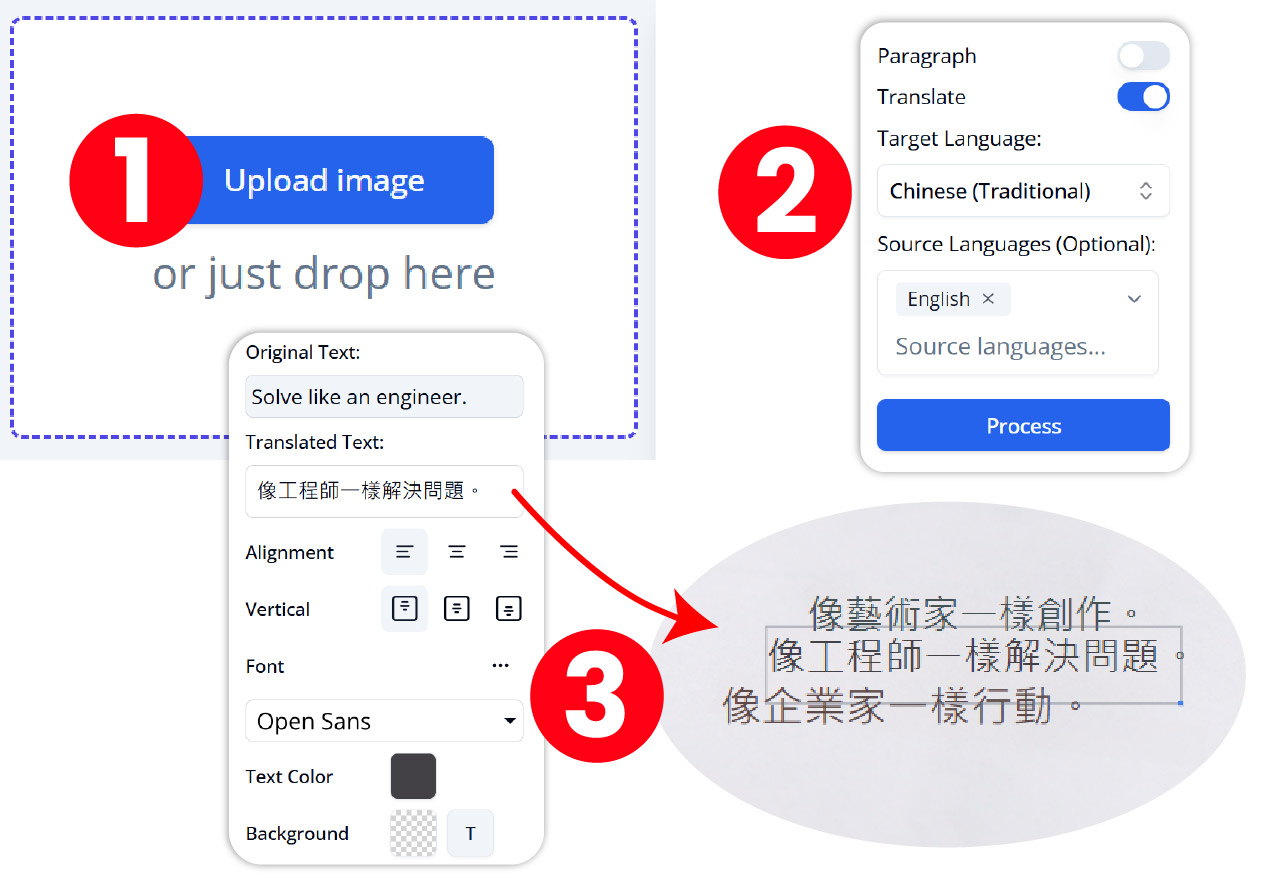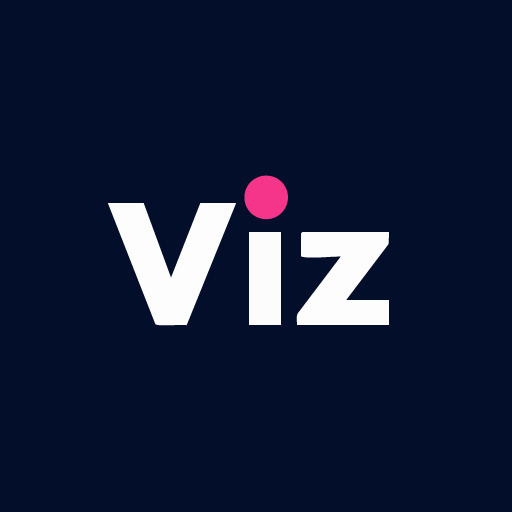Comprehensive Guide to Translating Text in Technical Diagrams with Visual Paradigm’s AI Image Translator
Comprehensive Guide to Translating Technical Diagrams with Visual Paradigm’s AI Image Translator
In an increasingly globalized world, technical documentation, such as UML, BPMN, flowcharts, and ArchiMate diagrams, often needs to be translated for international teams and multilingual stakeholders. Translating text within these diagrams accurately while preserving their structure is critical for engineers, architects, and business analysts. Visual Paradigm’s AI Image Translator is a specialized tool designed to address this challenge, offering precise translations for technical diagrams without compromising layout or terminology.

This comprehensive guide explores why generic translation tools fall short, provides detailed instructions for using the AI Image Translator, and shares best practices for creating multilingual technical documentation. It also highlights the tool’s advanced AI capabilities and diverse applications beyond software diagrams.
Why Translate Technical Diagrams?
Technical diagrams are essential for communicating complex ideas in fields like software engineering, business process modeling, and system architecture. However, language barriers can hinder collaboration when working with global teams or clients. Translating text within diagrams ensures:
- Clarity for Stakeholders: Accurate translations make diagrams accessible to non-native speakers.
- Consistency Across Teams: Uniform terminology strengthens collaboration.
- Compliance with Localization Needs: Translated documentation meets regional or client-specific requirements.
Unlike text documents, diagrams pose unique challenges due to their structured layouts, technical jargon, and visual elements. Visual Paradigm’s AI Image Translator is tailored to overcome these obstacles, making it a vital tool for technical professionals.
Limitations of Generic Translation Tools for Technical Diagrams
Most free online image translation tools rely on basic Optical Character Recognition (OCR) and are designed for photos, scanned documents, or handwritten notes. These tools often fail when applied to technical diagrams because of:
- Complex Layouts:
- Diagrams like UML class diagrams or BPMN workflows contain nested elements, connectors, and annotations that generic OCR tools misinterpret.
- Misaligned text boxes or broken connectors can render diagrams unusable.
- Technical Terminology:
- Terms like “aggregation” (UML), “gateway” (BPMN), or “polymorphism” (OOP) require domain-specific translations that generic tools cannot handle accurately.
- Font and Formatting Issues:
- Small or stylized fonts, common in flowcharts or schematics, are often misread.
- Translated text may not fit within original text boxes, disrupting readability.
- Lack of Context Awareness:
- Generic tools cannot distinguish between diagram types (e.g., a BPMN gateway vs. a flowchart decision node) or interpret context-specific terms.
Visual Paradigm’s AI Image Translator addresses these issues by leveraging advanced AI, context-aware recognition, and format preservation, ensuring high accuracy for technical diagrams.
Step-by-Step Guide to Translating Technical Diagrams
Follow these steps to translate text in technical diagrams using Visual Paradigm’s AI Image Translator:

Step 1: Prepare Your Diagram
- Supported Formats: The tool accepts common image formats like PNG, JPG, and SVG.
- Image Quality: Use high-resolution images with clear, legible text (minimum 12pt font). Export diagrams directly from tools like Visual Paradigm Online to avoid blurry screenshots.
- File Upload:
- Navigate to the AI Image Translator on Visual Paradigm’s website.
- Drag and drop your diagram (e.g., a UML sequence diagram or BPMN process model) or click to upload.
Step 2: Select Source and Target Languages
- The tool supports over 50 languages, including:
- English ↔ Chinese (Simplified/Traditional)
- Spanish ↔ German
- Japanese ↔ French
- Arabic ↔ Russian
- Auto-Detection: The AI can automatically detect the source language in most cases.
- Specialized Needs: For niche languages or dialects, manually specify the source and target languages to ensure accuracy.
Step 3: Review and Refine Translations
- Text Detection: The AI identifies text blocks within the diagram and translates them while preserving the original layout, including shapes, arrows, and connectors.
- Manual Adjustments:
- Technical Terms: Verify translations of industry-specific terms (e.g., “inheritance” in UML or “swimlane” in BPMN). You can edit these directly in the tool.
- Formatting: Adjust font size, alignment, or spacing if the translated text affects readability.
- Glossary Integration: For consistent terminology, upload a predefined glossary of technical terms before processing.
Step 4: Export or Share the Translated Diagram
- Output Options:
- Download the translated diagram as an image (PNG, JPG, or SVG) for immediate use.
- Export as an editable file (e.g., VP Online format) for further modifications.
- Sharing: Share the translated diagram directly with collaborators via a secure link or integrate it into Visual Paradigm Online for team access.
Best Practices for Multilingual Technical Documentation
To maximize the effectiveness of translated diagrams, follow these best practices:
- Use High-Quality Source Images:
- Ensure diagrams have clear, machine-printed text to minimize OCR errors.
- Avoid scanned or low-resolution images, as they reduce translation accuracy.
- Maintain a Glossary of Technical Terms:
- Create a glossary for industry-specific terms (e.g., “artifact” in ArchiMate or “node” in network diagrams) to ensure consistent translations.
- Upload the glossary to the AI Image Translator for automatic application.
- Test with Small Sections First:
- Before translating a large or complex diagram, process a small section (e.g., one UML class or BPMN task) to verify accuracy and formatting.
- Adjust settings or glossary terms based on the test results.
- Adopt Universal Standards:
- Use standardized notations (e.g., UML 2.0, BPMN 2.0) to minimize cultural or regional misinterpretations.
- Avoid symbols or colors with culture-specific meanings that may not translate well.
- Combine with Diagramming Tools:
- After translation, import the diagram into Visual Paradigm Online for further editing or to create multilingual versions.
- Use version control to track changes across translated versions.
- Validate with Native Speakers:
- For critical projects, have a native speaker review the translated diagram to confirm technical accuracy and cultural appropriateness.
How AI Enhances Technical Diagram Translations
Visual Paradigm’s AI Image Translator leverages advanced AI capabilities to deliver superior results for technical diagrams:
- Context-Aware Recognition:
- The AI identifies the type of diagram (e.g., UML, BPMN, flowchart) and interprets terms based on their context.
- For example, it distinguishes whether “port” refers to a networking component or a shipping term.
- Format Preservation:
- Maintains the structural integrity of diagrams, including text alignment, connector lines, and shape positions.
- Ensures translated text fits within original text boxes without manual realignment.
- Multi-Language Support for Annotations:
- Accurately translates labels and annotations in complex diagrams, such as engineering schematics or medical illustrations.
- Glossary Integration:
- Allows users to preload company-specific or industry-standard terms for consistent translations across projects.
- Version Control:
- Enables side-by-side comparison of original and translated diagrams to track changes and ensure accuracy.
Comparing Manual vs. AI-Powered Translation
| Factor | Manual Translation | AI Image Translator |
|---|---|---|
| Time | Hours or days for copying and translating text | Seconds to minutes for full-diagram processing |
| Accuracy | Prone to human error, especially with jargon | Context-aware handling of technical terms |
| Formatting | Requires manual realignment of text and shapes | Automatically preserves layout and connectors |
| Scalability | Slow for large or multiple diagrams | Efficient for bulk processing |
| Cost | Labor-intensive, may require professional services | Cost-effective with free demo and paid plans |
Example: Translating a 50-element UML class diagram manually could take a day, including text extraction, translation, and reformatting. With the AI Image Translator, the process is completed in minutes with minimal manual intervention.
Use Cases Beyond Software Diagrams
While the AI Image Translator excels at translating UML, BPMN, and flowchart diagrams, its applications extend to other domains:
- Product Labels and Packaging:
- Translate text on mockups or prototypes for international markets.
- Example: Convert English nutritional labels to Spanish or Mandarin.
- Annotated Technical Drawings:
- Translate labels in engineering schematics, machinery diagrams, or DBMS architectures.
- Example: Localize annotations in a CAD drawing for a German manufacturing partner.
- Educational Materials:
- Translate textbook diagrams or e-learning visuals for multilingual classrooms.
- Example: Convert a biology diagram’s labels from English to Japanese.
- Business Process Documentation:
- Translate process maps or organizational charts for global offices.
- Example: Localize a BPMN workflow for a French-speaking branch.
- Medical and Scientific Diagrams:
- Translate annotations in medical illustrations or research diagrams.
- Example: Convert a cardiology diagram’s labels from English to Russian.
Why Technical Teams Need Specialized Image Translation
Businesses operating across borders often require documentation in multiple languages to support global operations. However, translating text in technical diagrams presents unique challenges that generic OCR tools cannot address:
- Structural Integrity: Misaligned text or broken connectors in translated diagrams can lead to miscommunication or errors in implementation.
- Terminology Precision: Incorrect translations of technical terms (e.g., “encapsulation” in OOP) can confuse stakeholders or compromise project accuracy.
- Readability: Translated text that overflows text boxes or uses mismatched fonts reduces diagram clarity.
Visual Paradigm’s AI Image Translator ensures translations retain the original layout and terminology, making it indispensable for technical teams working on mission-critical projects.
Getting Started with Visual Paradigm’s AI Image Translator
Try the Free Demo
- Access the AI Image Translator and test it with a sample diagram.
- The free demo allows limited translations, ideal for evaluating the tool’s capabilities.
Upgrade to Combo Edition
- Unlock full access to advanced features, including bulk processing, glossary integration, and editable file exports.
- Visit Visual Paradigm’s pricing page for details.
Integrate with Visual Paradigm Online
- Combine the AI Image Translator with Visual Paradigm Online’s diagram maker for seamless editing and collaboration.
- Create, translate, and manage multilingual diagrams in one platform.
Frequently Asked Questions
Q: Can the AI Image Translator handle handwritten diagrams?
A: No, the tool is optimized for digital documents with clear, machine-printed text. Handwritten diagrams may require manual transcription first.
Q: Does it support LaTeX or mathematical notations?
A: Currently, the tool focuses on text-based annotations and does not render LaTeX or mathematical formulas. For diagrams with equations, translate text separately and reinsert formulas manually.
Q: How accurate are translations for niche technical terms?
A: The AI provides high accuracy for standard technical terms but may require manual review for highly specialized or proprietary terms. Using a predefined glossary improves consistency.
Q: Can I process multiple diagrams at once?
A: Yes, the Combo Edition supports bulk processing, allowing you to translate multiple diagrams efficiently.
Q: Is the tool secure for sensitive diagrams?
A: Visual Paradigm employs industry-standard encryption to protect uploaded files. Always review the privacy policy for sensitive projects.
Conclusion
Translating text in technical diagrams is a critical task for global collaboration, but it requires precision and specialized tools. Visual Paradigm’s AI Image Translator streamlines this process by delivering accurate translations, preserving diagram layouts, and supporting a wide range of use cases. Whether you’re localizing UML models, BPMN workflows, or engineering schematics, this tool saves time, reduces errors, and enhances multilingual communication.
Start with the free demo today and experience how the AI Image Translator can transform your technical documentation workflow.
